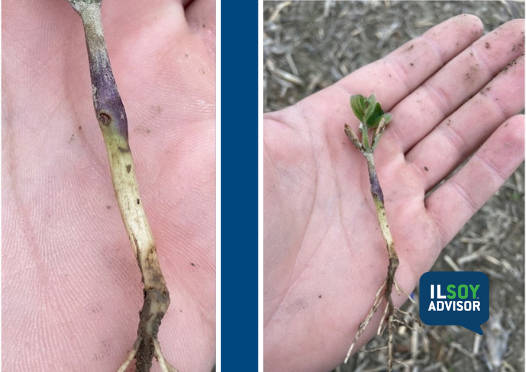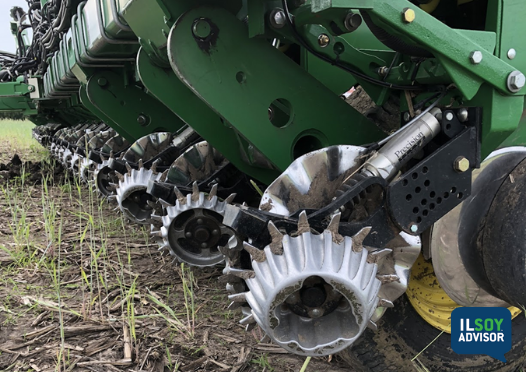ILSOYADVISOR POST
Agronomy: How Valuable Are Seed Treatments in 2016?
Time to pare down the budgets; are seed treatments on your cut list?
2016 is a tough year economically for soybeans. It is going to be hard to make money on soybeans when cash prices are below $9 a bushel. What makes it even tougher is that growers now know that soybeans will yield if they invest and apply the best management practices. So are growers willing to cut expectations on yield by saving money on technology? That is a tough decision each grower has to make.
So where do seed treatments fit into management and where do you draw the line?
First, seed companies want to promote the use of seed treatments as a good investment and in one aspect they are. You want as many seeds as possible to survive, germinate and become vigorous plants. And the seed you are purchasing is expensive—you want to protect that investment. So as you reduce seed rate (population) and strive to plant earlier by 1 or 2 weeks, seed treatments become a good investment. And today some seed companies won’t sell seed without a seed treatment.
Today’s seed treatments come with different products.
- Fungicides to control seedling diseases (usually two or three modes of action)
- Insecticides to control soil-borne insects
- Nematicides to control soybean cyst nematode (SCN)
- Bayer CropScience’s ILeVO® to control Sudden Death Syndrome (SDS)
- Inoculants, including rhizobia and other fungal and bacterial species, that enhance root activities and nutrient uptake
So when it comes to deciding whether to use seed treatments and how much to spend, focus on what your potential problems are and what fields and soils present the most risk.
Naturally, fungicides should be your first choice and you need multiple modes of action. You’re dealing with multiple species, like Pythium, Rhizoctonia, Phytophthora and Fusarium, and usually multiple biotypes, with some having resistance. That’s why companies who make seed treatment fungicides stack several modes of action today—and that is a good decision.
One really has to question use of an insecticide seed treatment on soybeans. On corn it makes a lot of economic sense because of the number of insects that can attack corn seed and seedlings. But in soybeans, seed treatment insecticides are promoted to control bean leaf beetle and soybean aphids. But the reality is that these two insects actually are a problem much later and seed treatment insecticides provide minimal control. This is a product you can get by without.
Chemical and biological controls of SCN and SDS are nice-to-have packages, but fit in with other more common management practices. While they have a benefit in high-risk situations, in low-risk fields and when you have good varietal resistance or tolerance you probably can get by without these.
Last is the biological class. As with many of the new high-end products that came on the market in the past decade, when prices are high products like these make sense because you get a return on your investment. However, when prices are low these types of products will add cost, but may not give you a consistent return. So choose wisely.
Seed treatments are a good risk management tool as they protect your investment in seed and your one-time opportunity to get a good stand. But weigh carefully the chance of getting the full benefit of an investment in a complete package.
Agronomist Dr. Daniel Davidson posts blogs on agronomy-related topics. Feel free to contact him at djdavidson@agwrite.com.





Comments
Add new comment